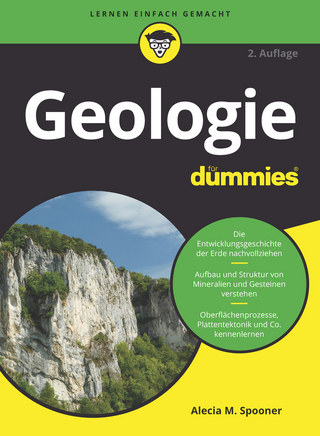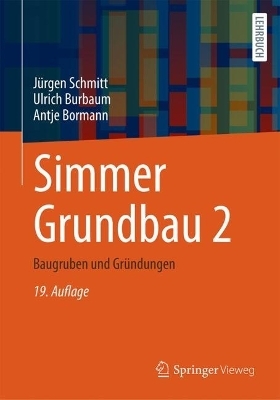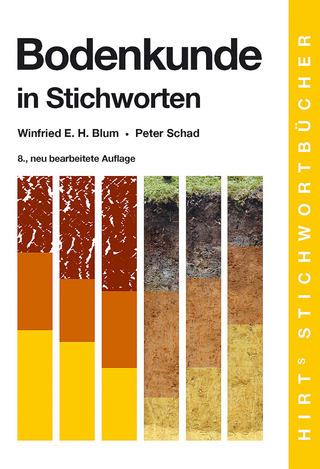
Chondrules
Cambridge University Press (Verlag)
978-1-108-41801-0 (ISBN)
Chondrules are spherical silicate grains which formed from protoplanetary disk material, and as such provide an important record of the conditions of the Solar System in pre-planetary times. Chondrules are a major constituent in chondritic meteorites, however despite being recognised for over 200 years, their origins remain enigmatic. This comprehensive review describes state-of-the-art research into chondrules, bringing together leading cosmochemists and astrophysicists to review the properties of chondrules and their possible formation mechanisms based on careful observations of their chemistry, mineralogy, petrology and isotopic composition. Current and upcoming space missions returning material from chondritic asteroids and cometary bodies has invigorated research in this field, leading to new models and observations, and providing new insight into the conditions and timescales of the solar protoplanetary disk. Presenting the most recent advances, this book is an invaluable reference for researchers and graduate students interested in meteorites, asteroids, planetary accretion and solar system dynamics.
Sara S. Russell is Head of Planetary Materials at the Natural History Museum, London and Visiting Professor at the Open University. She is a fellow of the Meteoritical Society and has been honoured with the eponymous asteroid 5497 Sararussell. She has been awarded the Antarctica Service Medal of the United States of America and the Bigsby Medal of the Geological Society. Her research interests include the formation of the solar system and the evolution of the moon. Harold C. Connolly, Jr, is founding Chair and Professor in the Department of Geology, School of Earth and Environment, Rowan University, New Jersey. He is also a Research Associate at the American Museum of Natural History and was a special Visiting Professor at Hokkaido University in Sapporo, Japan. He has been awarded the Antarctica Service Medal of the United States of America, and in 2006 Asteroid 6761 Haroldconnolly 1981 EV19 was named in his honour. He is a co-investigator and Mission Sample Scientist for NASA's New Frontiers 3 asteroid sample return mission OSIRIS-REX, and co-investigator for JAXA's asteroid sample return mission, Hayabusa2. He is a fellow of the Meteoritical Society. His career has been devoted to understanding the formation and evolution of primitive planetary materials, chondritic meteorites, to chondrule formation, the formation and dynamical evolution of asteroids, and the origin of Earth-like planets. Alexander N. Krot is a researcher at the University of Hawai'i, Manoa from which he received the Regents' Medal for Excellence in Research in 2004. He has also received a Humboldt Research Award, and an Antarctica Service Medal of the United States of America. He has been recognised by having both an asteroid (6169 Sashakrot Ex4) and a mineral (krotite) named in his honour. He is a fellow of the Meteoritical Society, from which he has been recently awarded the Leonard Medal. His research interests include astrophysical and cosmochemical problems related to the formation and early history of the solar system; chondritic meteorites and refractory inclusions; and isotope chronology.
List of contributors; 1. Introduction Sara. S. Russell, Harold C. Connolly, Jr and Alexander N. Krot; Part I. Observations of Chondrules: 2. Multiple mechanisms of transient heating events in the protoplanetary disk: evidence from precursors of chondrules and igneous Ca, Al-rich inclusions Kazuhide Nagashima, Guy Libourel and Kelly E. Miller; 3. Thermal histories of chondrules: petrologic observations and experimental constraints Rhian H. Jones, Johan Villeneuve and Guy Libourel; 4. Composition of chondrules and matrix and their complementary relationship in chondrites Dominik C. Hezel, Phil A. Bland, Herbert Palme, Emmanuel Jacquet and John Bigolski; 5. The chondritic assemblage: complementarity is not a required hypothesis Brigitte Zanda, Eric Lewin and Munir Humayun; 6. Vapor-melt exchange: constraints on chondrite formation conditions and processes Conel M. O'D. Alexander, Denton S. Ebel and Guy Libourel; 7. Chondrules in enstatite chondrites Emmanuel Jacquet, Laurette Piani and Michael K. Weisberg; 8. Oxygen isotope characteristics of chondrules from recent studies by secondary ion mass spectrometry Travis J. Tenner, Takayuki Ushikubo, Daisuke Nakashima, Devin L. Schrader, Michael K. Weisberg, Makoto Kimura and Noriko T. Kita; 9. 26Al-26Mg systematics of chondrules Kazuhide Nagashima, Noriko T. Kita and Tutu H. Luu; 10. Tungsten isotopes and the origin of chondrules and chondrites Thorsten Kleine, Gerrit Budde, Jan L. Hellmann, Thomas S. Kruijer and Christoph Burkhardt; 11. The absolute Pb-Pb isotope ages of chondrules: insights into the dynamics of the solar protoplanetary disk James N. Connelly and Martin Bizzarro; 12. Records of magnetic fields in the chondrule formation environment Roger R. Fu, Benjamin P. Weiss, Devin L. Schrader and Brandon C. Johnson; Part II. Possible Chondrule Forming Mechanisms: 13. Formation of chondrules by planetesimal vollisions Brandon C. Johnson, Fred J. Ciesla, Cornelis P. Dullemond and H. Jay Melosh; 14. Making chondrules by splashing molten planetesimals: the dirty impact plume model Ian S. Sanders and Edward R. D. Scott; 15. Formation of chondrules by shock waves Melissa A. Morris and Aaron C. Boley; 16. Evaluating non-shock, non-collisional models for chondrule formation Alexander Hubbard and Denton S. Ebel; 17. Conclusions Harold C. Connolly, Jr, Alexander N. Krot and Sara S. Russell; Index.
| Erscheinungsdatum | 04.09.2018 |
|---|---|
| Reihe/Serie | Cambridge Planetary Science |
| Zusatzinfo | Worked examples or Exercises; 16 Plates, color; 57 Halftones, black and white; 63 Line drawings, black and white |
| Verlagsort | Cambridge |
| Sprache | englisch |
| Maße | 178 x 252 mm |
| Gewicht | 1080 g |
| Themenwelt | Naturwissenschaften ► Geowissenschaften ► Geologie |
| Naturwissenschaften ► Geowissenschaften ► Mineralogie / Paläontologie | |
| Naturwissenschaften ► Physik / Astronomie ► Astronomie / Astrophysik | |
| ISBN-10 | 1-108-41801-5 / 1108418015 |
| ISBN-13 | 978-1-108-41801-0 / 9781108418010 |
| Zustand | Neuware |
| Informationen gemäß Produktsicherheitsverordnung (GPSR) | |
| Haben Sie eine Frage zum Produkt? |
aus dem Bereich


